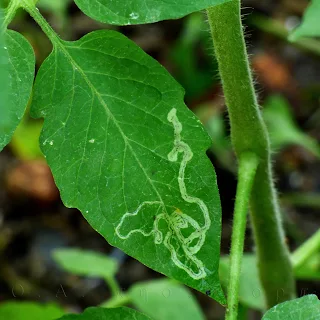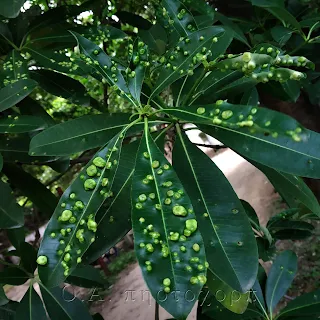citrus leaf eater
Life cycle
Adult butterfly lays a lot of eggs on lemon and curry leaf. Eggs measure in 1-2 mm in diameter. Citrus butterfly lays eggs during the months spring season. Eggs develop into adult through complete metamorphosis (where, larvae completely differ in morphology and food habit from the adult one).
Eggs develop into larvae in one week. The juvenile larvae feed on the host leaf and develop into adult larvae. Adult larva goes complete rest of one day and metamorphosed into pupa.
The pupa are green colored and feed on the either of the host leaves. After one week, pupa take complete rest of one day and metamorphosed into chrysalis. At this stage chrysalis looks like nothing is happening inside, but a number of developmental processes are going inside the chrysalis. lemon butterfly take about 10 days from chrysalis to adult butterfly.
Eggs develop into larvae in one week. The juvenile larvae feed on the host leaf and develop into adult larvae. Adult larva goes complete rest of one day and metamorphosed into pupa.
The pupa are green colored and feed on the either of the host leaves. After one week, pupa take complete rest of one day and metamorphosed into chrysalis. At this stage chrysalis looks like nothing is happening inside, but a number of developmental processes are going inside the chrysalis. lemon butterfly take about 10 days from chrysalis to adult butterfly.
 |
| Butterfly Life cycle |
Mealybug on Hibiscus (Gurhal)
Name of the host: China rose (Hibiscus rosa-sinensis L.)
Name of the pathogen: Maconellicoccus hirsutus (mealybug)
Name of the pathogen: Maconellicoccus hirsutus (mealybug)
Symptoms and Insect
 |
 |
| Colony of mealybugs | Mealybugs on twig (enlarged) |
Mealybugs are seen in feeding-colonies protected in the
crown of foliage. Usually they thrive in the axils of leaves, branches and young
developing leaves. They also thrive at both surface of leaves. They appear white
in color. Humidity and warm temperature favor the mealybugs. They produce
honeydews which feed the black sooty-mold. Infestation of mealybugs affect the
shoot growth. Leaves are malformed and branch is stunted.
Mealybugs (Maconellicoccus hirsutus Green) belong to the family Pseudococcidae of Hemiptera. Insects are distinctly segmented, oval, soft and covered with wax. Mealybugs are most devastating piercing and sap-sucking plant pests. They suck liquids from the phloem through their long slender mouthparts. They affect many plants including rose, vegetable, fruits and ornamental plants.
Mealybugs (Maconellicoccus hirsutus Green) belong to the family Pseudococcidae of Hemiptera. Insects are distinctly segmented, oval, soft and covered with wax. Mealybugs are most devastating piercing and sap-sucking plant pests. They suck liquids from the phloem through their long slender mouthparts. They affect many plants including rose, vegetable, fruits and ornamental plants.
Control measures
- Smaller population can be controlled by rubbing with cotton dipped in rubbing alcohol.
- Mealybug population can be effectively controlled by spray Carbosulfan and mixture with either Bifenthrin or Imidacloprid (Fatima et al., 2016). Adequate moisture should be maintained in soil while insecticidal application.
- Another best chemical to get ride of mealybugs is to spray the porfenophos 40 % + cypermethrin 4 % EC (personal observation).
- Biological control with Garden ladybugs is effective. They eat the mealybugs.
References
- Fatima, S., Hussain, M., Shafqat, S., Faheem Malik, M., Abbas, Z. and Noureen, N., 2016. Laboratory Evaluation of Different Insecticides against Hibiscus Mealybug, Maconellicoccus hirsutus (Hemiptera: Pseudococcidae). Scientifica, 2016.
Leaf miners
Host: Tomato and other vegetables
Name of the pathogen: Liriomyza sativae Blanchard (fly)
Name of the pathogen: Liriomyza sativae Blanchard (fly)
Symptoms
 |
 |
| Cucumber leaf showing mining tunnel | Tomato leaf showing mining tunnel |
Symptoms appear as silvery lines on the leaves, which are
caused by mining of larvae of leaf miner fly. Infection of leaf minor often does
not cause much harm, but in severe cases, reduced the yield. The pattern of
mining tunnel is used to identify the insect. These mining trails can also provide
way of entering other bacteria and fungi.
Pathogen
The disease is caused by several genera of leaf miner flies
including Liriomyza sativae. The flies lay down their egg in the leaves.
The larvae feed upon the internal soft tissues (avoid cellulosic tissues) by
wandering within the leaves and create characteristic mining tunnel. At maturity,
larvae exit the leaf and become adult.
Control measures
- As the leaf minors are attacked by their natural enemies, the disease is under control in field grown vegetables.
- Yellow sticky traps kept near the plant trap the flies, before they lay their eggs.
- As the larvae is internal, systemic insecticides is useful.
- The disease can be prevented by spraying neem oil.
Foliar galls of Alstonia scholaris
Host Alstonia scholaris R. Br.
Pathogen Pauropsylla tuberculate Crawford
Pathogen Pauropsylla tuberculate Crawford
Distribution
Alstonia scholaris is around 40 m tall tree with
greenish white fragrant flowers. It is commonly called as the "Devil
tree" and “Satparni/Satpatia” (for seven leaves in a whorl). The flowers
are fragrant during the evening and night, when nectries open. The tree is
planted in by the roadside and in the gardens and parks for shade and greenery
purposes. The disease is in all the Asian countries including Bangladesh,
India, Myanmar, Malaysia, Philippines, Thailand, Vietnam and from Papua New
Guiana (Percy et al., 2015). In India the disease is reported from most of the
states, including Uttar Pradesh, Bihar, West Bengal, Assam, Tamil Nadu, etc. In
Panjab, Haryana, Chandigarh and Delhi the disease appeared in the form of epidemic
in 2010 (Tripathy et al., 2019). In Allahabad and Sultanpur district of India almost
all the plants are severely infected by this disease (personal observation).
Symptoms
 |
 |
| Leaves of Alstonia scholaris showing galls | Leaves of A. scholaris showing galls |
Symptoms appear as a gall on the stem, leaves, inflorescence and fruits. Galls are produced as a result of hyperplasia and hypertrophy,
which is induced by fluids secreted by insects and their eggs (Albert et al.,
2011). Insect induces the gall for their own benefit to protect the eggs. In
infected inflorescence, seed formation is affected, as the fruits are deformed.
Pathogen
Insect pest Pauropsylla tuberculata Crawford Syn: Pseudophacopteron
tuberculatum (Crawford) Enderlein causing gall of Alstonia scholaris
belong to Psylloidea of Homoptera. The insect is small, soft and
succulent.
References
- Albert, S., Padhiar, A., Gandhi, D. and Nityanand, P., 2011. Morphological, anatomical and biochemical studies on the foliar galls of Alstonia scholaris (Apocynaceae). Brazilian Journal of Botany, 34(3), pp.343-358. (https://doi.org/10.1590/S0100-84042011000300009).
- Percy, D.M., Butterill, P.T. and Malenovský, I., 2016. Three new species of gall-forming psyllids (Hemiptera: Psylloidea) from Papua New Guinea, with new records and notes on related species. Journal of Natural History, 50(17-18), pp.1073-1101. (https://doi.org/10.1080/00222933.2015.1104394).
- Tripathy, M.K., Pasayat, B., Tripathy, A. and Bhol, N., 2019. Seasonal Incidence of Gall Forming Psyllid Pseudophacopteron tuberculatum, Crawford Infesting Alstonia scholaris R. Brown at Bhubaneswar, Odisha. Journal of Tree Sciences, 37(2), pp.14-21. (DOI: 10.5958/2455-7129.2018.00013.4).

